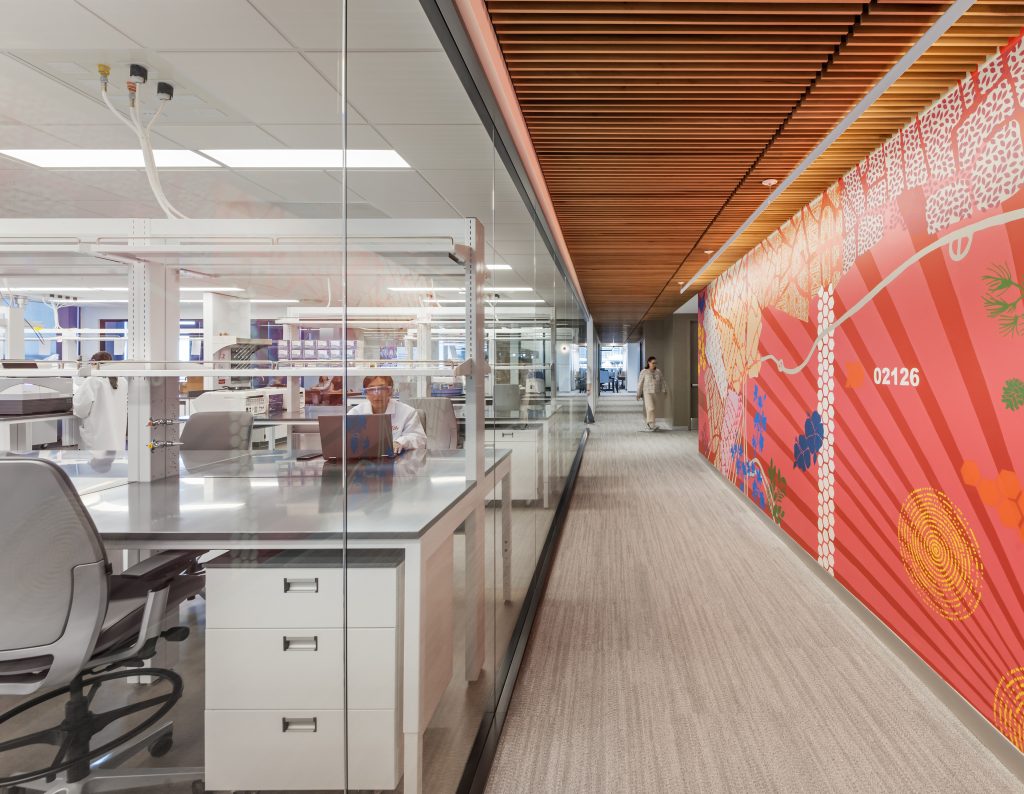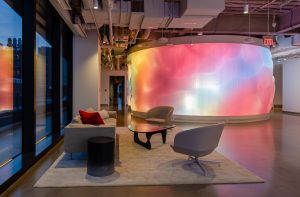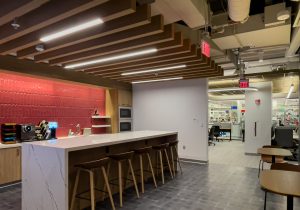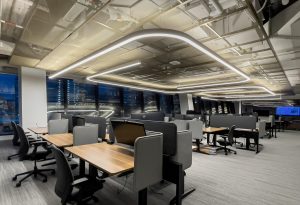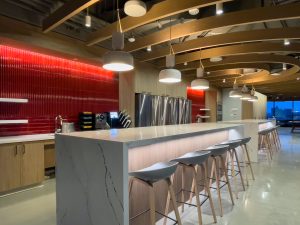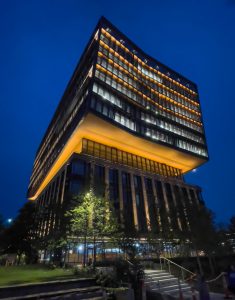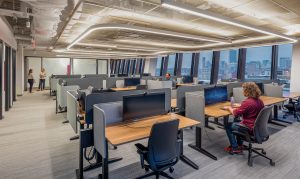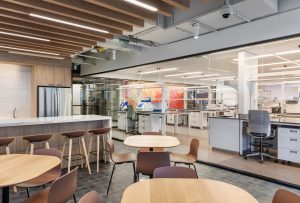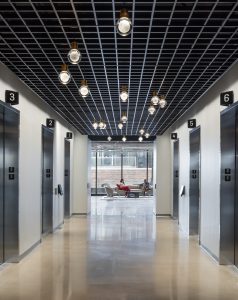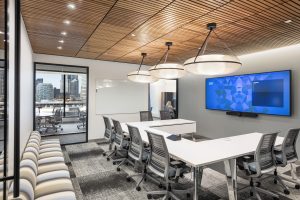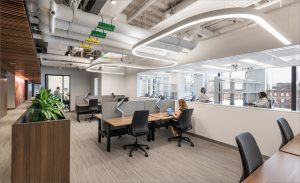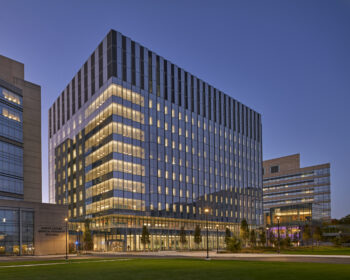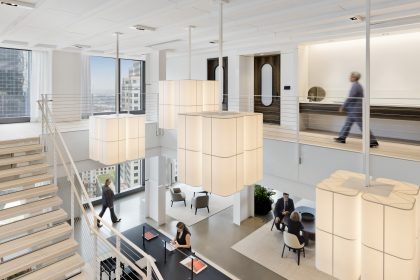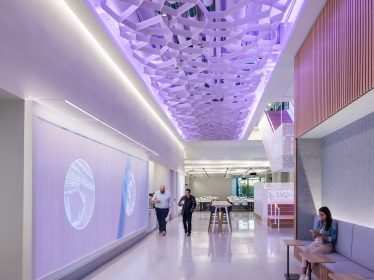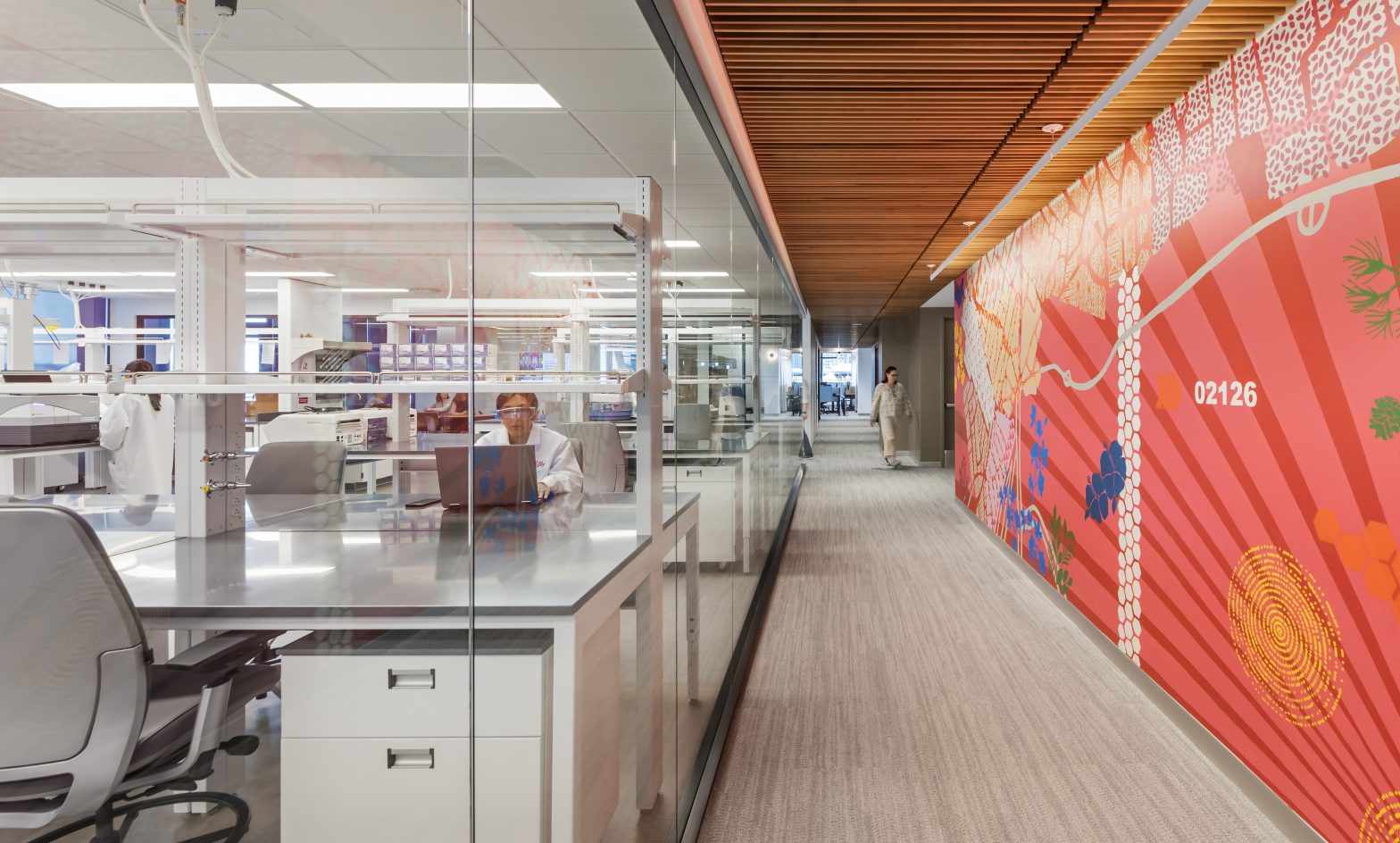
Confidential Client
Location
Boston, MA
Completed
2024
Size
346,000 SF
Owners
Confidential
Architect
Jacobs
Photographer
© Anton Grassl
Design Team
This 346,000-square-foot office/lab building brings the energy of 700 researchers and scientists to Boston’s Seaport district, advancing RNA- and DNA-based therapies and drug development to create life-changing medicines. A striking 12 stories high, it serves as a hub of innovation and adds a dynamic visual presence to the neighborhood’s skyline.
Throughout the facility, the themes of transparency and energy are amplified by the lighting design. Always underlying this amplification is consistently high-quality lighting that meets critical task needs, while eliminating glare and excessive contrast.
The lighting solution in the laboratories is very cost effective and energy efficient, but still provides the required high light levels without glare. This approach conserved resources to be redirected elsewhere on the project, providing energizing visual environments that support researchers’ cutting-edge work.
In the office areas, complex patterns of curving linear direct/indirect fixtures (inspired by organic flows) energetically snake over the workstations. Meeting rooms incorporate multiple layers of light, adjustable to user preference. Every room provides soft, glare-free facial illumination, suitable for comfortable and effective videoconferencing with locations worldwide.
Lighting controls in all collaboration spaces give occupants the ability to adjust the lighting to meet their needs, whether it should be a global video conference or quiet conversation.
The lighting in the cafés and the dining commons is more varied in visual contrast and ambience, providing a casual yet energizing atmosphere for informal collaboration and social interaction.
Fixture wattages were carefully selected to achieve the lowest lighting-power densities possible, regardless of energy code allowances. Light was used purposefully – applied where needed and not wasted. In the laboratories, the LPD is 0.77w/ft2, 42% below that allowed by code. To optimize the energy use, occupancy sensors were added to laboratories, even though not required by code.
